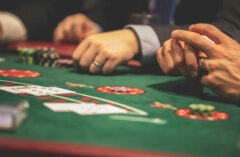Table of Contents
- 1 MYTH #1 Society doesn’t need to be LGBT-inclusive, we are already good with it.
- 2 MYTH #2 Biology has nothing to do with LGBT-inclusive sex education.
- 3 MYTH #3 LGBT topics are Already Covered. Parades and Mass Media, why more at schools and colleges?
- 4 MYTH #4 Popularization of LGBT information is propaganda.
- 5 Curious?
- 6 MYTH #5 By not including LGBT people in a Sex-Ed curriculum we are protecting our kids.
- 7 MYTH #6 Conservative values are the only correct way to live, it’s been working for years.
- 8 True Colors
- 9 MYTH #7 Sex Ed is useless, kids learn everything on their own.
- 10 MYTH #8 Students don’t need Sex Ed, because kids are too little to understand it. Adults will figure out their sexual orientation on their own.
- 11 In Conclusion
In 73 countries, LGBT+ people are prosecuted under the law. For example, in Saudi Arabia, they face the death penalty. In other countries, even the most liberal ones, the problem of homophobia is not completely solved either, even though there has been noticeable progress in the treatment of LGBT+ people. Attacks on homosexual and transgender people are known not only from Saudi Arabia but also from Western Europe or the United States. That is why every coming out is a step that requires great strength and courage.
Each accepted coming out makes the LGBT community even more visible. But at the same time, being able to come out is a great privilege that is not available to every queer person. This is when inclusive sex education comes into focus. In general, education is a strong tool of influence, which can shape society, make changes and drive progress. We all strive for happiness, so why cannot education be a little more inclusive for LGBT+ people who need this?
Modern society is getting more and more progressive, which is great. However, the importance of inclusivity in sex education is often sadly neglected. In some states, the program for sex-ed includes only information applicable to heterosexuals.
It is said that if something is not discussed, it doesn’t exist. Naturally, that is not true. It is extremely important to include LGBT sex-education topics into programs. We need to make sure students are mindful of the world around them and open about their sexuality.
Let’s review some frequently asked questions on why LGBT-inclusive sex-ed is vital for contemporary society. At the same time, let’s debunk some myths around a topic that should have never been controversial.
MYTH #1 Society doesn’t need to be LGBT-inclusive, we are already good with it.
If society really perceived LGBT+ people as positively as heterosexuals, there would be no need for the LGBT movement. But this is still a long way off: in most countries, heterosexuality and gender binary are considered to be normal. Heterosexual people have many privileges that they do not notice. They can openly express their feelings about their partner, get married, and adopt.
Understanding and acceptance by others is natural. There is no risk of being fired, beaten or killed because of orientation. Even if you don’t use all these privileges, that doesn’t mean they don’t exist. And that LGBT people don’t suffer from their absence. Romantic preferences and sexuality are indeed a private matter for everyone. But in the case of LGBT people, “the personal is political,“. Reminding the community of their existence is vital.
MYTH #2 Biology has nothing to do with LGBT-inclusive sex education.
First of all, not everything “natural” equals good: if we did things the way nature intended, people would still be living in caves and dying before they reached 30 y.o. But even if we dressed up in skins and switched to a paleo diet, there is no evidence that homosexuality is uncommon in nature.
Among animals, bisexual and homosexual behavior is common: elephant, penguin, black swan, dolphin, bat, and hundreds of other species, including a close human relative, the pygmy chimpanzee, may have one-time sex or a long affair with a member of their own sex. Scientists note that homosexual behavior is more common in social animal species that live in tightly organized groups (like us humans!) and often have sex for purposes other than reproduction (biologist Bruce Bagemihl discusses this in detail in his book “Biological Exuberance: Animal Homosexuality and Natural Diversity”). Although homosexuality is found in many species, homophobia is found in only one: homo sapiens.
MYTH #3 LGBT topics are Already Covered. Parades and Mass Media, why more at schools and colleges?
The entire pop culture and the world, in general, is one big heterosexual parade. For example… A family from an orange juice commercial. Characters from the majority of TV series on cable channels. Couples holding hands in the street. 90+ % are heterosexuals actively. They are “showing off” their orientation are encountered literally at every turn. Nevertheless, the idea of holding a Pride Parade for LGBT people yearly is often met with hostility.
This speaks only to the level of intolerance in society. Other groups fighting for their rights do not provoke such a violently negative reaction. In countries where they are allowed, Pride parades are not provocations. They are fun mass events for people of all gender identities and orientations. They celebrate the freedom to be oneself and honor heroes who fought for equal rights for all.
If LGBT people (and any other minorities) were unconditionally accepted for who they are, there would be no need for parades. This is the part of inclusivity, people are different and their interests should be reflected through educational programs. Children of modern society already see a world that is different from what is being taught at school or college, so it is only logical for the educational system to adjust.
MYTH #4 Popularization of LGBT information is propaganda.
Fear of accidental and “fatal” homosexual contact, which can turn a heterosexual into a gay man, is part of the homophobic culture. It is an extreme and unfortunately common misconception in some parts of the world that arises from a lack of proper sexual education.
The phrase ‘to become gay’ is wrong at its core. Not even sex with a person of one’s own sex will not make a heterosexual gay – and vice versa. In past there were instances of the evil of “corrective rape” of lesbians. Which did not “correct” their orientation, only permanently traumatized women. To avoid such harrowing cases properly, inclusive sexual education should be provided globally. Just Imagination being “raped” for your own good?
Curious?
As for “seeing and wanting to try it,” that’s fine. Under the right conditions, teenagers, exploring their sexuality, go through a stage of various experiments, including homosexual experimentation. Lots of important thematic professional papers claim that orientation is fluid right up to the age of thirty.
In addition, attraction to one’s own sex and even sexual contact does not “diagnose” oneself as homosexual. The painful speculation “what if I am gay/lesbian?” is primarily caused by the stigma surrounding LGBT people. Sex-ed can destigmatize it and provide for healthier youth.
All that is required of responsible parents is to create an atmosphere of trust. An atmosphere where children are willing to share information about their lives. To talk about contraception and sexuality when the time comes. Sex-ed is meant to provide all the needed information to children, to make it less awkward and more positive.

MYTH #5 By not including LGBT people in a Sex-Ed curriculum we are protecting our kids.
The laws do protect children from adult content. Period. Teenagers by age 18 have a lot of experience watching porn. Though very vague knowledge about contraception, sexuality, gender, and self-identification. In the future, these topics can become existential for children who missed out on a huge part of self-consciousness. But sexuality isn’t just about sex. It is about identity, through which young people can understand who and what they like, and who they are. Lastly, what the future may hold for them.
We have all observed examples of heterosexual relationships since infancy. Parents cuddling on the couch, even romantic adventures of Disney’s Cinderella. Is there sex in Cinderella? No. Does this fairy tale provide an example of a heterosexual relationship that becomes a model for children? Of course, it does.
Homosexual teens seeing only examples of heterosexual relationships in front of them begin to see themselves as “broken”. People with whom something is wrong. Nothing could be further from the truth. The result is depression and suicide attempts. According to American researchers, the risk of suicide among LGBT teens is three times higher than among their peers. Invisible LGBT adolescents, facing ridicule from society, and family, as well as internal homophobia, suffer from poor sexuality education. Something needs to happen to fix this broken misconception.
MYTH #6 Conservative values are the only correct way to live, it’s been working for years.
The Washington Post says that the numbers of tolerant and intolerant Americans have switched places. However, according to 2014 data, most LGBT+ people face negative reactions from family and friends. Even now these numbers can hardly be considered completely correct. Authors of an article in US National Library of Medicine National Institutes of Health state, say they don’t know how many LGBT people don’t tell relatives about their sexuality. Or gender identity. Many LGBT people, especially with conservative relatives, do not come out for their own safety and mental health reasons. Which, right now, is the safest bet.
True Colors
In addition, LGBT teens may be left homeless after coming out. According to the American foundation True Colors, which fights homelessness among LGBT people, about one in four American teens ends up on the streets after coming out; the UK has similar statistics. In other Western countries, LGBT people make up a record 40 percent of all homeless people.
Coming out inevitably entails tangible risks, because it is impossible to know the true attitudes of parents before confessing. This is why the fear of coming out can be caused by fears for basic human needs for food, protection and companionship, and a roof over one’s head. And that is why accepting relatives is a privilege that not every LGBT person has. Proper sex education can destigmatize the ideas within one community by making sure parents are more mindful of how different kids can be and embracing them.
MYTH #7 Sex Ed is useless, kids learn everything on their own.
In recent years, we’ve heard more often about the need to talk frankly with teens about sex, primarily because today’s teens have access to far more pornography than previous generations, and they often see porn movies as a teaching tool. Some experts say that sex education works best when it is discussed with children in a comfortable environment, not just about the structure of the genitals. They find that a trusting atmosphere and honest conversation about the ethical and psychological aspects of relationships – respecting personal boundaries, consent, pleasure, sexual orientation, gender, and concepts about one’s own body help achieve the best results.
As the taboo of talking about sex and gender is lifted, students begin to ask more questions. The right lessons can help teens cope with complexes about their own appearance and their bodies, gender, sexuality, and sometimes with bullying by classmates. In addition, experts say that sex education classes should not be divided by gender: not only girls but also boys should know about women’s health and menstruation. In their opinion, this approach forms a simpler and healthier attitude toward women’s health. The same applies to different sexual preferences. All the topics should be covered to normalize differences between students and increase awareness of self-acceptance.
MYTH #8 Students don’t need Sex Ed, because kids are too little to understand it. Adults will figure out their sexual orientation on their own.
The numerous taboos surrounding sex and the LGBT community and the inability of parents and teachers to talk to their children about it lead to many problems when the person enters adulthood.
An adult can figure out where their problems are and find the right specialist. This is not always the case with teenagers. According to Kate McCombs, a sex-education specialist, teenagers are bombarded with a lot of pornography. And advertisements for sex toys, and courses on how to please a partner. But many adults do not know how to even approach a discussion of their sexual preferences with another person. Especially if they identify with LGBT community. Some adults can’t deal with their sexual orientation. As a result, they suffer from psychological trauma. We need help, and there should be no shame in that.
In Conclusion
It is most difficult for adults who have not received any sex education. Migrants who moved to more progressive European countries or the US after graduating from school also talk about this. Young people who come to liberal countries to work deplore the prejudices that are prevalent in their native countries.
Proper, LGBT-inclusive sex education at school can help people understand themselves better. That opens a land of possibilities for a happy life as adults, and a healthier society.





